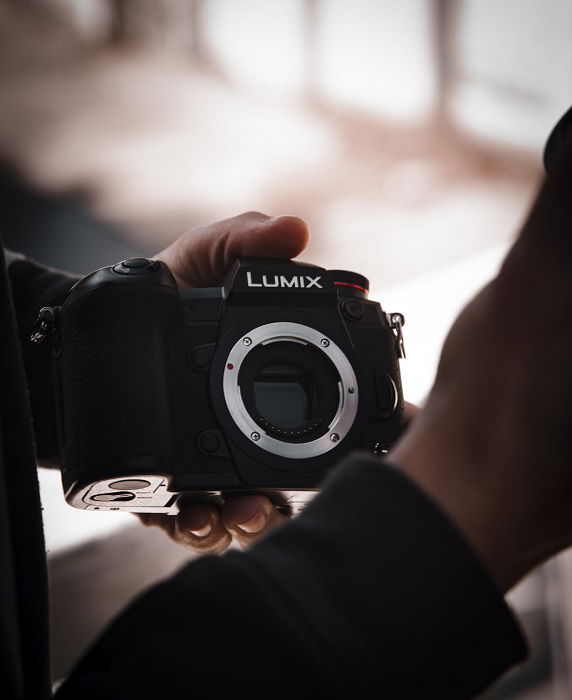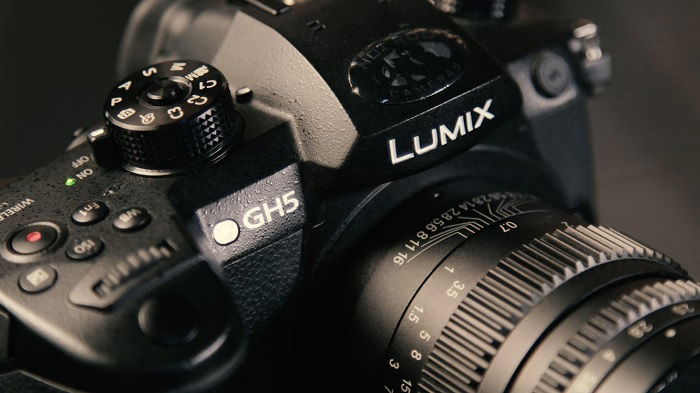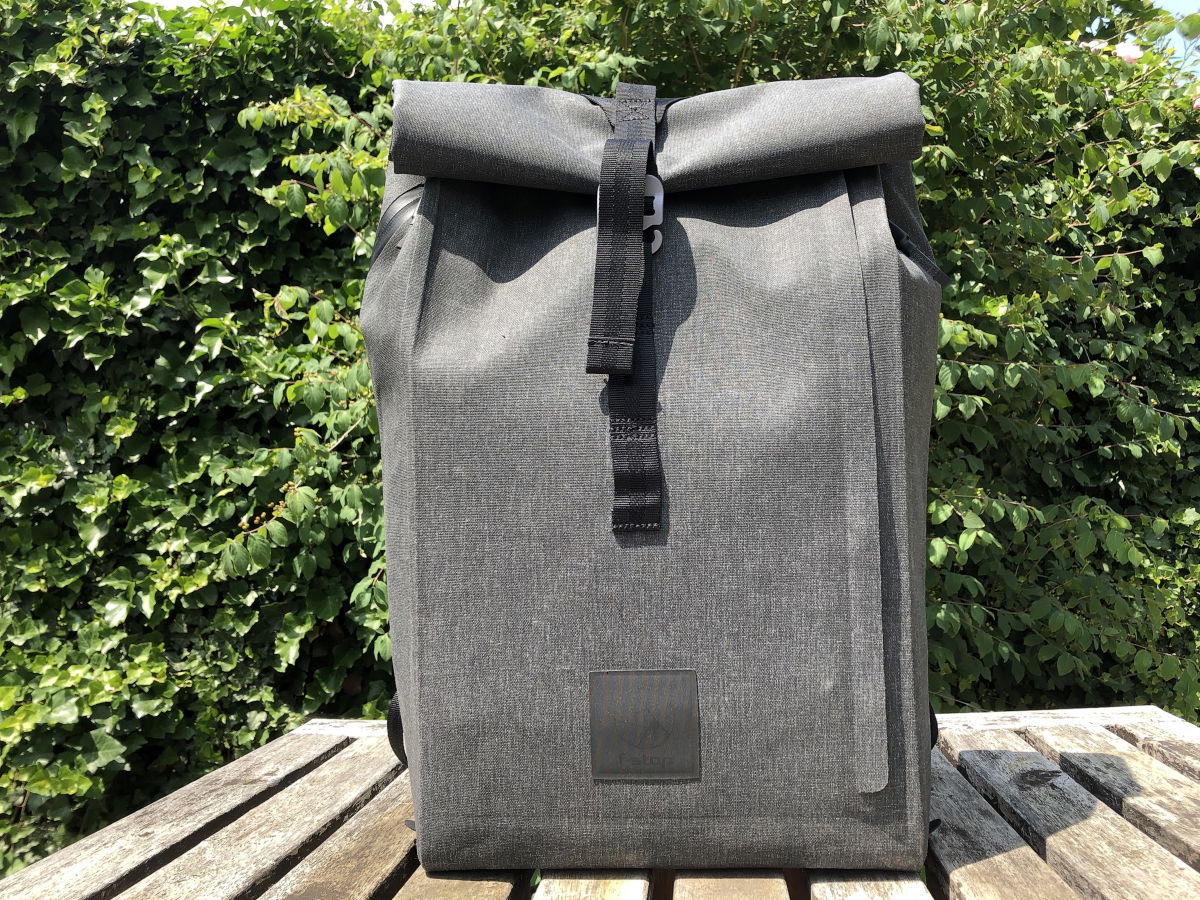Micro Four Thirds is a mirrorless, interchangeable-lens camera system. It was introduced in 2008 by Panasonic and Olympus to rival the larger mirrorless and DSLR cameras of the other camera brands
The Micro Four Thirds camera system gives photographers a smaller and more compact alternative DSLR and mirrorless cameras.
In this article, we’ll look at Micro Four Third cameras in more detail. We’ll also discuss what the future looks like for this nifty camera system and whether you should include one in your equipment bag.

A Micro Four Thirds (or MFT or Micro 3/4) camera gets its name from the sensor it uses.
Whereas standard mirrorless or DSLR cameras have either an APS-C or full frame sensor, MFT cameras have a smaller Micro Four Thirds sensor.
Like most mirrorless cameras, MFT cameras have interchangeable lenses. That means they have lenses that attach and detach. They also have many other similar features, like high-resolution shooting and video recording.
The main difference is the body size. MFT cameras are usually more compact than APS-C or full frame cameras. They are not always lighter, but they do take up less space in your camera backpack.
Only two camera brands produce Micro Four Thirds cameras. They are Panasonic Lumix and OM System (formerly Olympus). Panasonic also makes full frame mirrorless cameras, but OM System is dedicated to MFT cameras.

Mirrorless and DSLR sensors come in two different sizes. The first is APS-C, which is sometimes referred to as a crop sensor. Or they are full frame sensors, which are larger than APS-C sensors.
Micro Four Thirds sensors are smaller than both APS-C and full frame sensors. You’ll find APS-C and full frame sensors across many different brands like Nikon, Canon, and Sony. But MFT sensors are only found in Panasonic and OM System cameras.
Now we’ll take a look at each sensor type in more detail, examining the differences and how they relate to one another.
Full frame sensors are modelled on the size of a 35mm film negative. This means a full frame sensor measures. is 36mm x 24mm.
There is no crop factor with a full frame sensor. So if you’re attach a 50mm lens to your full frame camera, you get a true 50mm field of view. We’ll go into more detail on crop factor later in the article.
The larger surface area allows for more megapixels, meaning full frame cameras tend to have higher resolutions than APS-C models.
Full frame sensors are usually found in high-end, professional-level DSLR and mirrorless cameras.
Advanced Photo System type-C, more commonly known as APS-C, sensors are smaller than full frame sensors.
The standard APS-C sensor measures 23.6 mm x 15.7 mm for Nikon, Sony, and Pentax cameras. However, Canon has a slightly smaller APS-C sensor measuring 22.2 mm x 14.8 mm.
The smaller size compared to full frame means APS-C sensors tend to have lower resolution. Some APS-C cameras do have powerful resolutions, but this sensor is usually found in more entry-level models.
APS-C sensors also suffer from crop fact, which is why cameras that have them are called cropped sensor cameras.
A Micro Four Thirds Sensor is smaller than both an APS-C and full frame sensor. It measures 17.3 mm x 13 mm, with a diagonal measurement of 21.6 mm.
Another difference is the aspect ratio of the frame. Full frame and APS-C sensors give you a 3:2 aspect ration, while an MFT sensor gives you a 4:3 aspect ratio. This is where the name “four thirds” comes from.
The smaller surface size does limit the resolution of MFT cameras. Being smaller, they physically cannot accommodate the same number of pixels as a full frame sensor. That’s why MFT models tend to have a resolution around 20 MP.
Newer MFT models have a solution to this, however. They have high-resolution shot modes to helps photographers capture high-resolution images with a smaller camera.
Also, the small size of the MFT bodies doesn’t mean they are basic cameras. On the contrary. Micro Four Thirds cameras from OM System and Panasonic are packed with high-tech features for photography and videography.
Crop factor is also important when looking at MFT cameras. While an APS-C sensor gives you a 1.5x crop factor compared to full frame, an MFT sensor gives you a 2x crop factor. We’ll look at this in more detail below.

This section looks at crop factor and how it relates to Micro Four Thirds cameras compared to APS-C and full frame cameras.
Crop factor is how the size of the camera’s sensor effects the field of view and magnification.
Full frame cameras do not suffer from any cropping because the sensor is full frame. It is the same size as a 35mm film cell.
This means a lens’s labelled focal length is always accurate when paired with a full frame camera. If you use a 50mm lens on a full frame camera, you get a 50mm field of view.
Sensors smaller than full frame do suffer from crop factor as they are “cropped” in comparison to 35mm.
If a sensor is cropped, you will have a narrower field of view and a more magnified perspective. The amount this changes depends on how much smaller the sensor is compared to a full frame one.

APS-C sensors for Nikon, Sony, and Pentax give you a crop factor of 1.5X. This means the view is narrower and more magnified than on a full frame camera.
Canon APS-C sensors are slightly smaller, so you get a 1.6x crop factor.
It’s always important to consider crop factor when looking at lenses. The crop factor actually changes the focal length of your lens.
If you’re using a Nikon APS-C camera, the 1.5x crop factor will increase the effective focal length of a 50mm lens to 75mm. 75mm is now the equivalent focal length of this lens.
If you have a Canon APS-C camera, the 1.6x crop factor will change the focal length from 50mm to 80mm.
You should always consider the lens’s equivalent focal length when selecting glass for a shoot. The change in effective focal length can completely change the function of a lens.
As Micro Four Thirds sensors are even smaller than APS-C sensors, the crop factor is even more intense.
MFT cameras have a crop factor of 2x, giving you a narrower view and more magnification.
The 2x crop factor means a 50mm lens turns in to a 100mm lens. This turns a standard prime into a telephoto prime lens.
That’s why crop factor is something you can’t ignore when using a Micro Four Thirds camera. You have to make the calculation for the equivalent focal length whenever you buy a new lens.
As we’ve seen, crop factor can completely change the purpose of a lens, especially with MFT cameras. You might think you’re getting a standard 50mm prime, but the crop factor changes it to a 100mm telephoto lens.
You might ask, “Why don’t they label the lens with the equivalent focal length?” This might save some confusion, but that’s not how it works.
A lens’s focal length is a physical property that denotes specific measurements of that piece of hardware. This system of measurements within lenses is universal across all manufacturers. Changing this only for MFT cameras would mess everything up.
If you have a Micro Four Thirds camera, make sure you are aware of the equivalent focal length of any lens you use.
Micro Four Thirds cameras are definitely worth buying. However, we understand that they are not for everyone.
The people who like MFT cameras rave about them. But for others, MFTs just don’t fit with their style or objectives.
The most obvious positive is the size and portability. The small sensor allows for a smaller camera body overall. MFT cameras are an easy fit for any camera bag or backpack.
The main downside is the limited sensor resolution. They simply can’t house as many megapixels as an APS-C or full frame sensor.
OM System, however, has come up with a solution. The OM System OM-1 and OM-5 both have a high-resolution shot mode. This mode uses several exposures to create one high-res image. The results are truly impressive.

Micro Four Thirds cameras are also excellent for video recording. All the latest models have at least 4K capabilities and ports for external audio devices. They give you a professional setup for videography.
As a type of mirrorless camera, MFTs also have fast burst functions. The OM-1 Mark II even has a 120 fps burst with the electronic shutter.
All the best Micro Four Thirds cameras also have built-in 5-axis image stabilization. This is a fantastic feature if you’re shooting in low light or don’t fancy carrying a tripod around all the time.
As we’ve said, the main downside is the limited image resolution. The smaller sensor size can also have a negative effect on dynamic range. Many photographers also prefer holding a larger camera and find the MFT bodies a bit fiddly.
You can see all the best Micro Four Thirds cameras by clicking this link.
A Micro Four Thirds camera is an interchangeable lens camera with a sensor smaller than APS-C and full frame cameras.
Crop factor is one of the most important things to consider when looking at MFT cameras. You need to know your equivalent focal lengths when looking for lenses.
But despite their small size, Micro Four Thirds cameras are excellent machines. They are packed with advanced, high-tech features, helping users produce professional-level photographs and videos. They aren’t for everyone, but we love them.
